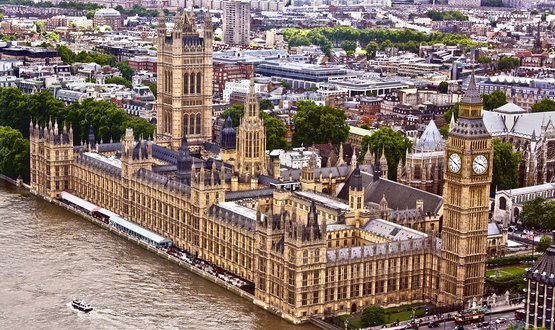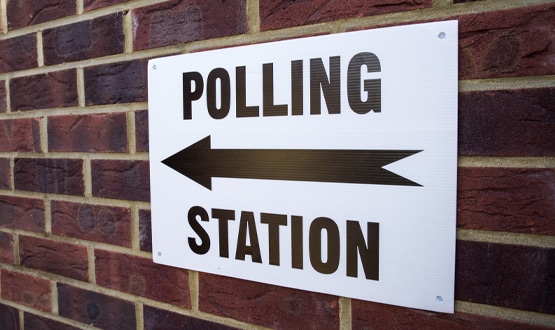NHS IT may be a loser from snap general election
- 26 April 2017

NHS IT is unlikely to feature at the hustings, but the decision to hold a snap general election may further delay efforts to digitise health and care services, argues Digital Health editor Jon Hoeksma.
NHS IT is unlikely to feature at the hustings, as much as it might provide light relief from Brexit, but the decision to hold a snap general election is likely to further delay efforts to digitise health and care services.
A quick review of past digitisation targets is a useful reminder here. In 2003 the National Programme for IT (NPfIT) originally aimed to roll-out electronic patient records across the NHS by 2006. The target proved wildly ambitious.
Fast forward a decade later to 2013 and Jeremy Hunt said he wanted the NHS to be paperless by 2018, a target that soon slipped and was pushed out to 2020. A revised target that nobody, including Dr Robert Wachter and Jeremy Hunt himself, believe will be met.
With 2020 no longer a general election year, will this target also be quietly retired? And if so what will take its place?
Election likely to delay GDE money
The most immediate impact of the general election on NHS IT is likely to be on further delaying the missing funds for the flagship global digital exemplar programme.
Will Smart, NHS England’s chief information officer, told leaders at a modernisation event last week that the money has finally been approved by Treasury, but the likelihood must be that it won’t see light of day this side of 8 June. This creates huge financial problems for GDEs who have proceeded on good faith on promises of national money, £10m each in the case of the acute exemplars.
One anonymous GDE CIO said: “My finance director is beside himself. Another letter promising the money is on its way is no help.”
Any further delays to money will have knock-on effects for the mental health GDEs, and proposed follow-on ambulance and community GDEs, plus the various fast followers.
If this happens, there is a real prospect the whole GDE programme will stall until the autumn. Which raises the prospect of reaching the first anniversary of the publication of the Wachter Review with its main recommendation having got bogged down before it even started.
GDE programme has come with opportunity cost
The programme has also diverted time, attention and resources required for digitisation away from the non-GDE organisations, which account for the vast majority of NHS trusts.
Instead of the high-profile GDE programme we could instead have had a Tech Fund 3, and possibly Tech Fund 4, which – if modelled on the first two tech funds and accompanying nursing tech funds – would have benefitted a broader range of trusts.
New research data from Digital Health Intelligence, tracking the adoption of different clinical systems by hospitals since 2013, shows that the successive tech fund rounds had a significant impact on the adoption of e-prescribing and vital signs observations across a relatively large number of trusts.
Is the £4.2 billion now at risk?
The £100m of GDE funds is small beer, however, compared to the £4.2 billion of NHS IT investment to 2020 promised by Treasury last year. Significantly, precious little of this money has actually found its way to local NHS organisations and STPs, and the promised funding remains shrouded in mystery.
There are worrying indications from STPs that this funding is already being raided by NHS England to plug NHS deficits. Most of the £1.8 billion that was to have been made available to local NHS organisations for digital investments – less the GDE money – was to have been channelled through STPs.
STPs being advised that funds for digital investments being cut
But Digital Health News now understands that STPs are being advised that funds available for digital investments, seen by many as vital to achieving sustainability and transformation objectives, will be sharply reduced.
One STP digital lead reports that they have been advised that, of a bid of £6m for digital investments, they have been advised by NHS England that only £1m will now be available. They noted this was “not really enough to do anything”.
Other sources say that they have been told that STPs which contain a GDE site have been advised they will get 20% less funding for digital, in effect penalised for having an exemplar on their patch.
And this was happening before a June general election was called. The NHS will come under intense scrutiny and the £4.2 billion for IT may well not survive the tumult of an election campaign. It is quite easy to imagine how money for IT may be repackaged or diverted for a more voter-friendly announcement on frontline funding.
Purdah paralysis
Then there is the awful deadening impact of purdah, which will – for the third year in a row – delay decisions on all manner of important policy issues, like a national position on information governance, for months to come. It is now a year since Dame Fiona Caldicott’s report was published with no sign of a response by NHS England.
When accompanied by successive leadership changes and reorganisations at NHS England and NHS Digital, the results can be paralysing. Sarah Wilkinson, the new CEO of NHS Digital, is not due to take up post until mid-August, 10 months after Andy Williams announced he was to retire.
New government, new targets and deadlines
The tumult of general elections also offer politicians the chance to drop inconvenient targets they hope voters may have forgotten about. This is made easier in an era where manifesto pledges are seen polite fictions. If the Chancellor Philip Hammond can brazenly drop commitments not to raise income tax, changing funding or deadlines on NHS IT projects would seem easy by comparison.
Jeremy Hunt cheerily admitted that achieving a paper free NHS fell into that category when he gave evidence to a House of Lords Committee on NHS Sustainability in December: “I perhaps rather bravely said I wanted the NHS to be paperless by 2018 in my first few months as Health Secretary, and I am quite relieved that most people seem to have forgotten that I made that promise.”
When the new government is formed after 8 June, and possibly a new secretary of state for health appointed, it is likely to quietly reset the clock on all digital health policy deadlines and programmes, all of which had been tied to 2020, which had thanks to the Fixed Term Parliament Act been the expected date for the next general election.
The paperless by 2018 target was extended to 2020, and Wachter has already said that 2023 is more realistic. But a new government will be tempted to give itself even more time.
What chance can we expect to see the new dates for NHS digitisation targets being set as 2025, the likely date of the next general election but one? This would be 19 years later than the 2006 date set by Tony Blair back in 2003 when NPfIT contracts were awarded.
Latest Clinical Digital Maturity Index data from Digital Health Intelligence, tracking the year-on-year adoption of clinical systems by hospitals, suggests that fully paperless will not be achieved until 2027, but a critical mass will be achieved by 2023.





6 Comments
Very funny Clive. Back in the real world firstly a million doesn’t go far in one organisation never mind many. Secondly a KPI project? Wow. What difference is that going to make on the front line?
You are missing my point Dave, if all the KPIs were derived at the national level bi a single org then it would free up the managers (working at the provider level) time because many of the managers are having to do admin/compile the DATA so that KPIs can be published, and published they MUST be otherwise the public has no idea whats going on. The NHS is answerable to the public whom it serves and whom pay the wages.
Clive you are putting the cart before the horse
Clive, work in the NHS with first hand experience? If so am surprised at your stance.
I do not understand your reply Gina? Please explain your thoughts …
Over the years the NHS has become accustomed to spending huge amounts of money on IT projects but technology is very powerful now and huge amounts of money are not needed to develop IT, to deploy IT within the NHS, well, that’s another matter. I think a million pounds is a lot of money and could be very effective particularly if projects are developed and deployed at a national level e.g. the measurement of KPIs using raw data.
Comments are closed.